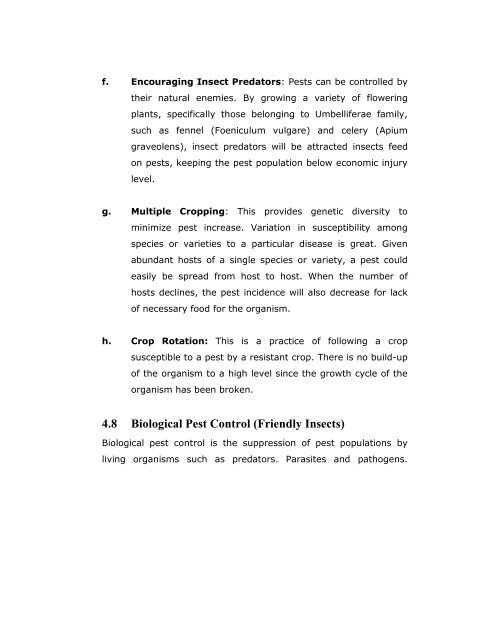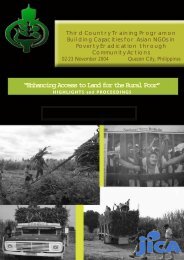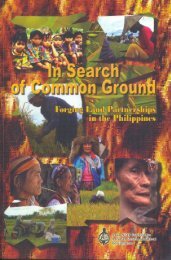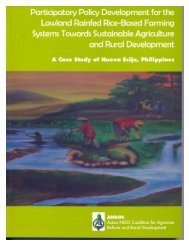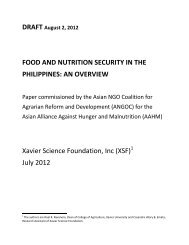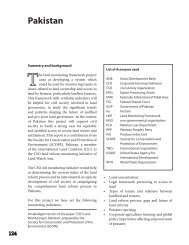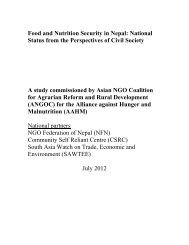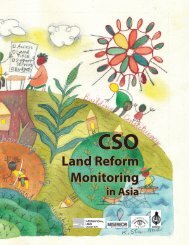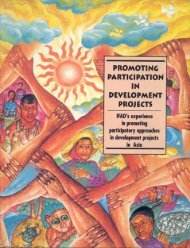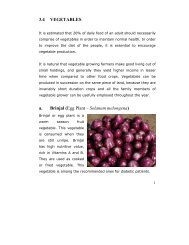Traditional Practices in Agriculture FULL - ANGOC Site
Traditional Practices in Agriculture FULL - ANGOC Site
Traditional Practices in Agriculture FULL - ANGOC Site
Create successful ePaper yourself
Turn your PDF publications into a flip-book with our unique Google optimized e-Paper software.
f. Encourag<strong>in</strong>g Insect Predators: Pests can be controlled by<br />
their natural enemies. By grow<strong>in</strong>g a variety of flower<strong>in</strong>g<br />
plants, specifically those belong<strong>in</strong>g to Umbelliferae family,<br />
such as fennel (Foeniculum vulgare) and celery (Apium<br />
graveolens), <strong>in</strong>sect predators will be attracted <strong>in</strong>sects feed<br />
on pests, keep<strong>in</strong>g the pest population below economic <strong>in</strong>jury<br />
level.<br />
g. Multiple Cropp<strong>in</strong>g: This provides genetic diversity to<br />
m<strong>in</strong>imize pest <strong>in</strong>crease. Variation <strong>in</strong> susceptibility among<br />
species or varieties to a particular disease is great. Given<br />
abundant hosts of a s<strong>in</strong>gle species or variety, a pest could<br />
easily be spread from host to host. When the number of<br />
hosts decl<strong>in</strong>es, the pest <strong>in</strong>cidence will also decrease for lack<br />
of necessary food for the organism.<br />
h. Crop Rotation: This is a practice of follow<strong>in</strong>g a crop<br />
susceptible to a pest by a resistant crop. There is no build-up<br />
of the organism to a high level s<strong>in</strong>ce the growth cycle of the<br />
organism has been broken.<br />
4.8 Biological Pest Control (Friendly Insects)<br />
Biological pest control is the suppression of pest populations by<br />
liv<strong>in</strong>g organisms such as predators. Parasites and pathogens.


